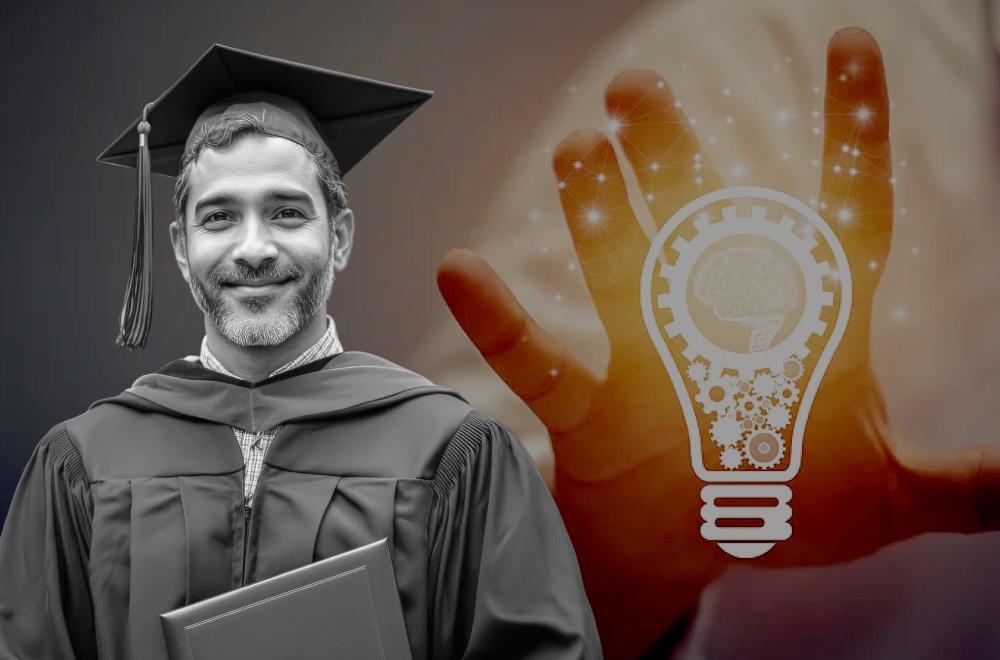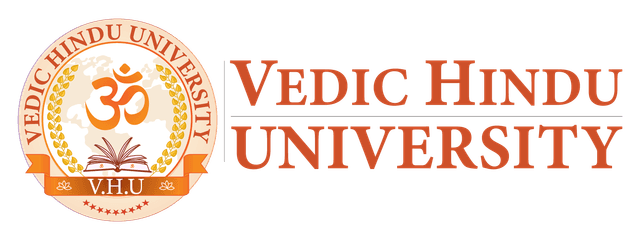United States
United States
Courses In United States
 Degree
DegreeDoctor of Business Administration
EuroAmerican Education
 United States2 Years
United States2 Years Degree
DegreeMaster of Business Administration
EuroAmerican Education
 United States18 Months
United States18 Months Degree
DegreeBachelor of Business Administration (BBA)
EuroAmerican Education
 United States3 Years
United States3 Years Degree
DegreeMaster of Science in Data Science
EuroAmerican Education
 United States18 Months
United States18 Months Degree
DegreeMaster of Science in Cybersecurity
EuroAmerican Education
 United States18 Months
United States18 Months Degree
DegreeMaster of Science In Computer Science
EuroAmerican Education
 United States18 Months
United States18 Months Degree
DegreeBachelor of Science In Computer Science
EuroAmerican Education
 United States3 Years
United States3 Years
Study In United States of America

The United States continues to be the most preferred country for pursuing higher education by international students. According to the Open Doors Report 2024, US has welcomed over 1.1 million international students in the 2023–24 academic year. This is a 7% rise from the previous year and the highest figure ever registered. Home to elite higher education institutions, United States offers multifaceted programs and a longstanding pursuit of academic rigor. It delivers exceptional educational opportunities spanning various disciplines such as business, management, technology, travel and tourism, humanities and arts.
The degree structure is quite flexible in US educational institutions. There is a strong emphasis on critical thinking, innovation and career readiness. U.S. education system helps students to prosper in a globally connected world. Whether your ambitions lie in entrepreneurship, cultural analysis, software development, law or public leadership, studying in U.S. opens doors to vibrant campus life, international networks and globally respected qualifications.
“Higher education is not a luxury; it is a necessity.” — Edward M. Kennedy
We present a comprehensive guide to studying in United States—covering everything from academic pathways and tuition to funding options, work opportunities and what to expect from your campus experience.
Why Choose United States for Studying Abroad?
United States enjoys a prestigious standing worldwide not just for its economic power and cultural influence, but also as a dominant force in global higher education. Blending time-honoured educational values with modern innovation and an expansive university network, U.S. is regularly recognised among the best countries worldwide for education quality and campus life. Home to some of the oldest and most prestigious universities—such as Harvard University (founded in 1636)—U.S. combines rich academic heritage with future-focused learning environments.
U.S. higher education system is respected all over the world for its flexible curriculum, research intensity and interdisciplinary approach, especially in fields such as technology, business, humanities, arts and health sciences. From liberal arts colleges to major research universities, institutions offer a wide array of academic pathways and experiential learning opportunities. With strong career services, post-study work options and a dynamic quality of life, it’s no surprise that international students across the globe choose U.S. to pursue degrees in engineering, computer science, business management, media studies, public affairs and beyond.
Why Students Choose U.S.:
- World Leader in Global Education
- #1 in the world for hosting international students (Open Doors Report, 2024)
- Home to over 200 of the top 1,000 universities worldwide (QS and THE Rankings, 2024)
- #1 in the world for hosting international students (Open Doors Report, 2024)
- Academic Freedom and Interdisciplinary Learning
American colleges emphasise critical reasoning, originality and cooperative learning, offering flexible programmes where students can mix majors and minors across disciplines like Business and Data Science or Political Science and Communication.
- Innovation and Research Powerhouse
- Over $84 billion invested annually in research and development across U.S. universities (NSF, 2024)
- Strong focus on STEM, AI, sustainability, digital humanities and entrepreneurship
- Over $84 billion invested annually in research and development across U.S. universities (NSF, 2024)
- Global Career Preparation
- Graduates from U.S. universities consistently lead in global employability rankings
- Access to OPT (Optional Practical Training) and STEM OPT extensions allows real-life professional engagement for students after completing their studies
- Graduates from U.S. universities consistently lead in global employability rankings
- Diverse and Inclusive Campuses
With students from over 200 countries, U.S. campuses offer inclusive environments, vibrant student life, multicultural events and strong support services for international learners
- Top Fields of Study Among International Students (2023–24):
- Engineering – 22%
- Math & Computer Science – 21%
- Business & Management – 17%
- Social Sciences & Humanities – 13%
(Open Doors Report, 2024)
- Engineering – 22%
- High ROI and International Recognition
A U.S. degree is globally recognised and highly regarded by employers, governments and academic institutions. Students can earn competitive salaries and enjoy long-term career mobility across industries and continents.
Studying in United States means joining an active learning environment that encourages new ideas, leadership and personal growth. No matter if you choose liberal arts, science or professional programmes, studying in U.S. gives you more than a degree—it helps you build a strong career and make a difference worldwide.
United States: A Global Leader in Education, Innovation and Career Preparation

Globally Recognised Academic Ecosystem
United States is home to some of the most prestigious and diverse higher education institutions in the world. From Ivy League universities to specialised schools in hospitality, tourism and business—such as Cornell University (School of Hotel Administration), NYU Tisch Center of Hospitality and UNLV’s Harrah College—U.S. blends intensive academic training aligned with industry needs. Programmes emphasise research, innovation and industry collaboration, ensuring students are well-prepared for leadership in transnational markets.
Safe, Inclusive and Culturally Rich Environment
With a strong emphasis on student safety, inclusion and support, U.S. provides a welcoming environment for international learners. Cities like Boston, San Diego and Chicago offer a high quality of life, excellent public services and multicultural communities. U.S. campuses are known for diversity and inclusion initiatives, helping international students feel supported both academically and socially. The country’s commitment to freedom, expression and student rights further elevates the learning experience.
Competitive Scholarships and Financial Support
While U.S. offers premium-quality education, it also provides extensive financial aid opportunities. Thousands of scholarships and assistantships are available through federal programmes, private foundations and individual universities. Institutions like Fulbright, Education USA and institutional grants help international students reduce tuition costs and gain access to top-tier education. Many schools also offer merit-based scholarships for students in tourism, hospitality and innovation-driven programmes.
Cultural Exposure and Multilingual Advantage
Studying in U.S. offers exposure to a broad spectrum of cultural and social experiences—ideal for fields like hospitality, tourism, international business and media. Students develop cross-cultural communication skills and learn how to engage with global audiences. With campuses that welcome students from over 140 countries, U.S. nurtures deep intercultural understanding. Learning Spanish, Mandarin or Arabic as a second language is also encouraged at many institutions, improving the global readiness of graduates.
Cultural Highlights of Studying in U.S.:
- Access to iconic national parks, museums and performing arts venues
- Major global events such as South by Southwest, Sundance Film Festival and international food expos
- Historic cities like Washington D.C., New Orleans and San Francisco for hospitality and tourism immersion
- Student-friendly travel to Canada, Mexico and the Caribbean during breaks
Exceptional Employability and Industry Ties
Students of U.S. universities are among the most employable in the world. The Optional Practical Training (OPT) and STEM OPT Extension programmes allow international students to gain valuable work experience after graduation. Companies like Marriott International, Hilton, Google and Walt Disney recruit directly from university campuses. The scale of U.S. economy and its innovation-driven service sectors create an abundance of internships, co-ops and post-study employment pathways.
International Reputation and Industry Connections
A U.S. degree is globally respected and often seen as a benchmark for academic and professional excellence. Institutions maintain strong ties with multinational corporations, think tanks, NGOs and global tourism networks. Students benefit from career fairs, alumni mentoring and international exchange opportunities. If you’re focusing on a corporate role, startup or global NGO, studying in U.S. opens doors across borders.
Admission Requirements for Foreign Students in USA
Applying as an international student to U.S. institutions is a straightforward process, though requirements may vary slightly depending on the university and specific programme. While there is no central application platform for all universities, many institutions accept applications via the Common App, Coalition App or their own online portals. Application fees are typically required, although fee waivers may be available.
Important Documents Required:
- Updated Curriculum Vitae (CV) or Résumé
- Valid Passport
- Passport-sized Photograph
- Identity Proof (if required)
- English Language Proficiency Test Scores
- Academic Transcripts (High school diploma for undergraduate; undergraduate degree for graduate; graduate degree for doctoral applicants)
- Statement of Purpose / Motivation Letter
- Letters of Recommendation (typically 2–3, depending on the programme)
- Standardised Test Scores (SAT/ACT for undergraduate; GRE/GMAT for some graduate programmes – though many are now test-optional)
Qualifications:
- Bachelor’s Programmes: Completion of high school (12 years of formal education) or an equivalent secondary qualification that allows university entry in the applicant's home country.
- Master’s Programmes: A recognised Bachelor’s degree in a related discipline.
- Doctoral Programmes (PhD/DBA/EdD): A Master’s degree or equivalent in a relevant field; research experience is often preferred.
Language Proficiency:
Since the primary medium of instruction is English, international students must demonstrate English language proficiency through one of the following:
- TOEFL IBT – Usually a minimum of 80–100 (depending on the institution)
- IELTS – Typically a band score of 6.5–7.5
- Duolingo English Test – Increasingly accepted, with scores ranging from 105 to 130+
- Exemptions are sometimes offered if prior education was in English-medium schools or universities
Application Deadlines:
- Undergraduate Admissions:
- Fall Intake (August–September): Regular deadlines usually range from November 1 to January 15
- Spring Intake (January): Deadlines typically fall between August and October
- Fall Intake (August–September): Regular deadlines usually range from November 1 to January 15
- Graduate Admissions:
- Deadlines vary widely by department and university, often between December and March for Fall intake.
- Some institutions offer rolling admissions, particularly for professional or online programmes.
- Deadlines vary widely by department and university, often between December and March for Fall intake.
Note: It is important to check individual university websites for exact deadlines, as some competitive programs may have early action or priority deadlines.
Key Tips for International Applicants:
- Begin preparations at least 12–15 months in advance to complete language tests, gather recommendation letters and fulfill visa requirements.
- Most universities will also require a financial statement or affidavit of support to demonstrate your ability to cover tuition and living expenses.
Once admitted, international students must apply for an F-1 Student Visa and most universities provide assistance through their international student offices.
USA’s Higher Education System: A Universal Powerhouse for Hospitality, Technology and Management Studies

With 4,000+ accredited institutions—covering research, liberal arts, community and career-focused education—United States provides unmatched academic diversity and flexibility. From bachelor’s to PhD or doctoral programmes, international students study in settings that uphold high academic standards while staying closely aligned with international workforce trends.
Varied Institution Types Include:
Research Universities:
These institutions emphasise academic excellence, innovation and research. They award degrees across disciplines such as computer science, business management, tourism and economics. Institutions like MIT, Stanford and Cornell lead in world rankings, offering both conceptual depth and practical scope.
Universities and Colleges Offering Applied Education:
U.S. institutions are known for their hands-on approach. Programmes in hospitality management, hotel operations, information technology and entrepreneurship are closely linked to practical applications and often include internships, practicums or co-op experiences.
Specialised Institutions:
Business schools, technology institutes and hospitality colleges offer niche programmes that are internationally recognised. Institutions like The Culinary Institute of America, Babson College (entrepreneurship) and tech academies provide focused career training in specific sectors.
Industry-Aligned Education:
From the energy of New York to the entertainment capital of Las Vegas, U.S. delivers world-class hospitality and tourism education in cities that double as living classrooms. Courses are designed around hospitality operations, resort management, tourism innovation and event leadership, often integrated with leading hotel chains and global travel networks.
U.S. universities deliver leading-edge education in technology and computer science, specialising in artificial intelligence, software engineering, cybersecurity and data analytics. They maintain deep ties with Silicon Valley, global tech giants and cutting-edge research labs.
In business and management, U.S. model blends academic theory with entrepreneurial and corporate practise. With direct access to Fortune 500 companies, startup ecosystems and international consultancies, students graduate well-prepared for high-impact roles in global organizations.
Credit-Based, Globally Recognised Degrees:
U.S. higher education system follows a credit-hour structure that aligns with international academic frameworks. Degree formats include:
- Bachelor’s Degree – Typically completed in 4 years (120–130 credit hours)
- Master’s Degree – Usually 1 to 2 years (30–60 credit hours), depending on the field
- Doctoral Degree (Ph.D./DBA/EdD) – Generally 3 to 6 years, requiring research and dissertation work
This structure allows seamless transfer between institutions and supports global academic mobility. Many U.S. universities also participate in international exchange programs and offer dual degree options in collaboration with universities abroad.
Why U.S. Stands Out:
- Flexibility in Curriculum: Students can choose minors, electives or even switch majors.
- Practical Exposure: Most programmes include internships, on-campus work options or industry partnerships.
- Innovation & Research: U.S. leads in global research output and funding, especially in technology and science.
- Global Recognition: U.S. degrees are widely accepted and respected by employers and universities worldwide.
From universally acknowledged hospitality schools to tech incubators and Ivy League business programmes, United States remains a global powerhouse in higher education—offering academic excellence, professional readiness and global impact across sectors.
Living in USA: Cost and Student Experience

United States offers an enriching student life experience, blending academic excellence with vibrant multicultural communities. While living costs can vary by location, students benefit from advanced infrastructure, global exposure and extensive campus services.
Monthly Cost of Living: USA vs Other Study Destinations
| Category | New York City, USA | Paris, France | Berlin, Germany |
| Monthly Living Cost | $1,800 – $3,000 (NYU, Columbia) | €1,200 – €1,800 (Campus France) | €934 – €1,300 (DAAD, 2024) |
| Tuition (Public Univ.) | $15,000 – $25,000/year (U.S. Dept. of Ed) | ~€2,770/year (Campus France) | ~€250 – €300/semester (admin fee only) (DAAD) |
| Health Insurance | $150 – $300/month (U.S. News, 2024) | €215/month | €140 – €150/month |
| Student Transport Pass | $60 – $130/month (varies by city) | €75/month | Included in semester fee |
Affordable U.S. Cities for Students
While cities like New York, Boston and San Francisco are among the most expensive, many students opt for affordable university towns such as:
- Austin, Texas – Known for its vibrant culture and lower living costs (~$1,200–$1,800/month)
- Madison, Wisconsin – Offers excellent public universities with affordable housing (~$1,100–$1,600/month)
- Gainesville, Florida – Home to University of Florida, where monthly living costs can be as low as ~$1,000–$1,400
These cities combine safety, cultural life and budget-friendly options in housing, transport and food.
Student Discounts and Lifestyle
International students in U.S. enjoy:
- Reduced rates on public transportation in university cities
- Student pricing at museums, movie theatres and live events
- Campus dining plans and subsidized housing in many public universities
- Access to on-campus jobs (up to 20 hours/week under F-1 visa regulations)
Safety and Infrastructure
U.S. offers:
- Strong campus safety services (many universities have 24/7 security)
- Excellent healthcare access (though costly, insurance coverage is comprehensive)
- Public and private housing options, often supported by student housing offices
General Guidelines for Visa Process for International Students in USA

International students who wish to study in United States must apply for a student visa, most commonly the F-1 visa. The F-1 visa is specifically for academic studies at accredited U.S. colleges and universities. Below is a step-by-step breakdown of U.S. student visa process, along with requirements and guidelines:
Visa Application Requirements:
1. Admission to a U.S. Institution (Form I-20):
Students must receive an official admission letter and a Form I-20 from a U.S. institution certified by the Student and Exchange Visitor Programme (SEVP). This document is essential and must be submitted during the visa application process.
2. SEVIS Fee Payment:
Before applying for the F-1 visa, students must pay the SEVIS I-901 fee, which supports the Student and Exchange Visitor Information System (SEVIS). The fee is $350 USD for F-1 applicants and must be paid online.
3. Visa Application Form (DS-160):
Students must complete the DS-160 Online Nonimmigrant Visa Application form and upload a passport-size photograph. Once completed, students receive a confirmation page with a barcode, which must be brought to the visa interview.
4. Valid Passport:
A valid passport is required and it must be valid for at least six months beyond the intended stay in U.S.
5. Proof of Financial Support:
Applicants must show that they have sufficient financial resources to cover tuition, fees and living expenses for the first year of study. This can include:
- Bank statements
- Affidavit of support
- Scholarship letters (if applicable)
- Sponsor's financial documents
6. Visa Application Fee:
A non-refundable visa application fee of $185 USD is required and should be paid prior to scheduling the interview.
7. English Language Proficiency (if required):
While not always required during the visa interview, applicants may need to show English proficiency through tests like TOEFL or IELTS as part of university admission.
Visa Application Process:
- Schedule an appointment with U.S. Embassy or Consulate in your home country.
- Attend a visa interview, bringing all supporting documents, including the I-20, DS-160 confirmation, SEVIS receipt, proof of funds, academic records and passport.
- During the interview, applicants may be asked about their study plans, career goals, ties to their home country and how they will fund their education.
Processing Time:
Visa processing times vary, but students are advised to apply at least 2-3 months before the programme start date. Visa issuance can take anywhere from a few days to several weeks.
Upon Arrival in U.S.:
1. Entry to United States:
Students can enter U.S. no earlier than 30 days before the start date mentioned on the I-20 form.
2. Port of Entry Inspection:
At the airport, students must present their passport with visa, I-20 form and SEVIS receipt to U.S. Customs and Border Protection (CBP) officer. A Form I-94 (Arrival/Departure Record) will be issued electronically, indicating their legal status and stay duration.
3. Report to the Designated School Official (DSO):
Students must report to their school’s DSO within a few days of arrival to activate their SEVIS record. This is mandatory to maintain legal F-1 status.
Additional Information:
Visa Extensions and Status Maintenance:
- F-1 visas are issued for the full duration of the academic programme (as indicated on the I-20).
- Students must remain enrolled full-time and maintain good academic standing.
- Visa renewal must be done outside U.S., but status extensions (like programme extensions) can be handled through the DSO.
Post-Graduation Work (OPT):
- Optional Practical Training (OPT): Allows students to work in their field of study for up to 12 months post-graduation.
- STEM OPT Extension: Eligible STEM students may extend OPT by 24 additional months.
Changing Status or Transferring Schools:
- F-1 students can transfer to other SEVP-approved schools and change academic levels (e.g., from undergraduate to graduate) with proper SEVIS updates.
- Changing from F-1 to another visa status requires filing with U.S. Citizenship and Immigration Services (USCIS).
Supportive Legal Framework:
U.S. education and immigration system ensures that international students are supported through:
- Regular guidance from Designated School Officials (DSOs)
- Federal protections under SEVIS
- Clear post-study work options (OPT/CPT)
- Access to health, safety and academic resources
Moving Around the City
United States offers a range of urban and regional transportation options, although availability and convenience can vary widely depending on the city. In major student hubs like New York, Boston, Chicago, Washington D.C. and San Francisco, students benefit from extensive networks of subways, buses, trams and commuter trains. Many universities also partner with local transit authorities to offer student discount passes or free shuttle services within campus zones.
- Public Transport:
- Metro systems (e.g., NYC Subway, Chicago “L”, Boston MBTA) offer affordable travel with student passes ranging from $60–$130/month.
- Bus networks operate in nearly all cities and college towns, often with late-night routes designed for student safety.
- Metro systems (e.g., NYC Subway, Chicago “L”, Boston MBTA) offer affordable travel with student passes ranging from $60–$130/month.
- University Shuttles: Most large campuses operate their own shuttle services that connect dorms, libraries and academic buildings—often free of charge.
- Student Discounts: Many cities offer discounted monthly transit passes for students, reducing transportation costs significantly.
- Cycling and Carpooling: Many universities have bike-share programmes and ride-share partnerships (like Zipcar and Lyft Student Discounts) to help students navigate cities affordably.
Though U.S. cities are more car-oriented compared to Europe, students in university towns or urban campuses enjoy well-connected, secure and accessible transport systems that support academic and social life. International students can also easily explore nearby cities and states via Amtrak trains, intercity buses (e.g., Greyhound, Megabus) or low-cost domestic flights.
Internships & Part-Time Work in U.S. for International Students

International students on F-1 visas can work under specific conditions:
- On-Campus Jobs: Allowed up to 20 hours/week during semesters and full-time during breaks. No additional work permit needed.
- Curricular Practical Training (CPT): Enables paid or unpaid internships during the course of study, tied to academic programmes. Requires university approval.
- Optional Practical Training (OPT): Permits up to 12 months of work post-study in a related field. STEM students can apply for a 24-month extension.
- Popular Sectors: Technology, finance, hospitality, business and healthcare. Major companies like Google, Marriott and JPMorgan offer structured internship programmes.
- Wages: Most internships and part-time roles are paid, often above the federal minimum wage ($7.25/hour)—state rates may vary.
All work must follow visa regulations, and universities support students via career services and international offices.
Career Perspectives for Students Post Achieving Their Degrees in United States

U.S. offers strong post-graduation career opportunities across tech, business, hospitality and healthcare sectors. International graduates on F-1 visas can apply for Optional Practical Training (OPT)—12 months of work in their field, with a 24-month STEM extension available for eligible degrees.
Important Highlights:
- OPT & STEM OPT Extensions: Up to 3 years of work experience post-study.
- H-1B Visa: Allows transition to longer-term skilled employment.
- Global Companies: Many U.S. firms actively hire international talent (e.g., Google, Hilton, Goldman Sachs).
- University Support: Career centres and job fairs assist with placements and networking.
Industry Outlooks:
- Management Graduates: High demand in consulting, finance and startups—especially in cities like New York, San Francisco and Chicago.
- Technology Graduates: Strong prospects in AI, cybersecurity and software engineering; Silicon Valley and Austin are major hubs.
- Hospitality Graduates: Opportunities in luxury hospitality, event management and tourism with global chains in major urban centres.
U.S. education system’s industry links and employer reputation give graduates a competitive edge globally.
Conclusion
United States truly lives by the words of Benjamin Franklin: “An investment in knowledge pays the best interest.” With its rich educational environment and diverse connections with industry giants, U.S. enables global education students to tap into limitless possibilities. With world-famous research institutions, vibrant career opportunities in technology, business, hospitality and other domains as well, studying in U.S. is an enriching experience that boosts innovation, diversity and international career achievement.
Blogs In United States

- Mar 11, 2025
- Technology

- Mar 11, 2025
- Technology

- Mar 11, 2025
- Management

- Nov 19, 2025
- Technology

- Mar 13, 2025
- Technology

- Mar 13, 2025
- Hospitality

- Mar 17, 2025
- Technology

- Apr 10, 2025
- Hospitality

- Apr 7, 2025
- Technology

- Sep 18, 2025
- Management

- Apr 3, 2025
- Technology

- Oct 22, 2025
- Hospitality

- May 30, 2025
- Hospitality

- Jun 5, 2025
- Technology

- Jun 6, 2025
- Management

- Jun 10, 2025
- Hospitality

- Jul 9, 2025
- Technology

- Jul 10, 2025
- Hospitality

- Jul 10, 2025
- Hospitality

- Jul 11, 2025
- Hospitality

- Aug 21, 2025
- Technology

- Aug 22, 2025
- Technology

- Sep 24, 2025
- Management

- Oct 1, 2025
- Technology

- Oct 11, 2025
- Management

- Oct 27, 2025
- Hospitality

- Nov 3, 2025
- Technology

- Nov 7, 2025
- Management

- Nov 6, 2025
- Technology

- Nov 8, 2025
- Technology

- Nov 12, 2025
- Technology

- Nov 12, 2025
- Hospitality

- Nov 12, 2025
- Management

- Nov 13, 2025
- Hospitality

- Nov 20, 2025
- Hospitality



